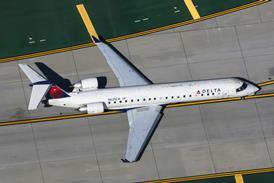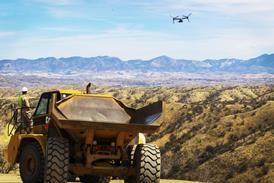NASA administrator Charles Bolden on 8 October called on Europe and the UK to stand behind their financial commitments to the International Space Station and work with the USA to keep it flying through 2020 and even 2024 – because the orbiting outpost is humankind’s “springboard” to Mars.
In London to address the Royal Aeronautical Society’s space strategy conference, Bolden stressed that all ISS partners are needed to keep the station flying. Commitments to 2020 need to be maintained, he says, and he hopes they would all concur with the USA's decision earlier this year to stick with the programme until 2024. Critically, he is calling on European governments to reaffirm their support for the ISS when they meet in Luxembourg in December to approve the next tranche in the European Space Agency’s budget.
After 13 years of continuous occupation, says Bolden, the ISS is showing solid returns in scientific research, especially relating to human health in microgravity and the high-radiation space environment. Bolden says that now is the time for all spacefaring nations to grasp the opportunity to work together in a push to reach Mars in the 2030s.
“Going to Mars is important,” says Bolden, because it is the only other planet in this solar system that may have harboured life. But there is no prospect of NASA going it alone, he stresses, adding that the broadly agreed global space exploration “roadmap” is achievable. As a result, all the ISS nations and other partners need “to keep the ball moving down the field” and press on with the research and incremental missions needed to send humans to Mars, he says.
If we step back now, he adds, it will be “generations” before we return to where we are today, which is a point of unprecedented international co-operation in space that transcends geopolitical troubles on the ground.
Praising the leadership of his UK Space Agency counterpart David Parker, Bolden also emphasises the huge contribution of the UK in deciding to return to participation in human spaceflight after decades of leaving it to other countries, and says he looks forward to UK ESA astronaut Timothy Peake’s flight to the ISS in 2015.
But, he warns – in a message aimed at UK and other European politicians as well as policy makers in the USA – human spaceflight capability cannot be turned on and off easily, so engagement has to be consistent. “You can’t be cool about this,” he notes.
Ultimately, ISS partners are agreed that the station’s limit from an engineering and maintenance standpoint is 2028. After the ISS era ends, the only space station flying will be Chinese. Responding to an RAeS audience question from Helen Sharman, the first Briton to fly in space – on a mission to the Soviet Mir station in 1991 – Bolden observed that NASA’s work to create international standards for space hardware, particularly docking equipment, would hopefully open a path to fluid collaboration between spacefaring nations in the post-ISS period.
During that time, while the capabilities to reach Mars will still be being built “incrementally”, it will be important to have interoperable spacecraft, be they national or private ventures. Things will always go wrong, notes Bolden, and it will be best if “anybody who has a spacecraft can go to help”.
Meanwhile, Bolden says he is excited about the 4 December planned unmanned test flight of NASA’s new Orion space capsule – the first craft since Apollo designed to take people beyond low Earth orbit. “That will be a huge day for humanity,” he says.
Source: FlightGlobal.com


























